Forum Replies Created
-
AuthorReplies
-
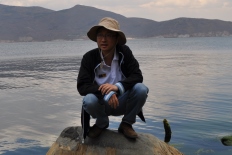 HaoyuMember
HaoyuMemberI have heard of GPP for awhile. I’ve even attended meetings talking about GPP, and have perused the GPP guideline before. So I had a good general idea of GPP. What I lacked was how to turn GPP principles into actionable items. This is where I thought this course was really great. I thought the 10 modules broken down the contents really well, stepwise going through how GPP principles can be applied to different stages of a clinical research program. Also the homework assignments and discussion questions are very well thought out in that each one really encourage us to relate what we learned in the modules to our own research context. So it is exactly what I needed.
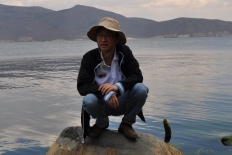 HaoyuMember
HaoyuMemberAs Kathrine said, there hasn’t be any “after” or “between” for us as we are trying to develop new sites, but there is “before”. I feel we learned a lot from the “before”, for example the pacing of our engagement activities. We had a good start with lots of activities that would build our relationship with sites and communities. but the challenge was that as our trial was delayed, and our program activities finished and funding became tight, we didn’t have enough to sustain the relationship building. Looking back, I think we should have better anticipated changes in reality and circumstance, and develop a longer term engagement plan that could have sustained some engagement activities in spite of hiccups and delays.
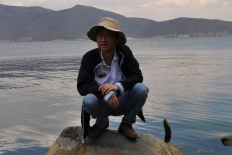 HaoyuMember
HaoyuMemberwell I think engagement and preparation ahead of time to minimize chance of such incident happening is what we all can agree upon, but sometime things happen no matter what. in this case, it’s unclear if the night club is indeed a place where participants are recruited or whether it was just a rumor, and if it is, then i sure would hope that the club owners did closely participate before the trial start and agreed to work with trial researchers, and had input to frame every aspect of the collaboration/coordination. it would be very bad if recruiters were just going there to recruit without owner knowledge. but regardless, when sometime like attack happens at a commercial venue, then you obviously need to communicate and placate the owners and try to address their concerns through meetings, definitely need to hear them out first. Then the central issue here is that participant have came under harm. what we hope is that before the trial, specific confidentiality protocols are in place to prevent something like this from happening, but once it happens in a place where homosexuality is highly stigmatized an illegal, it’s a tough issue. I think you need to talk with local community and advocacy groups that have experience with such things, hopefully they are represented in your CAB. I think you need to have good relation with local law enforcement agencies. even if they are not sympathetic to gays or there’s no legal framework for discrimination against gays, however from the perspective that people have been physically attacked in public venues is ground for law enforcement to step in and prevent these incidents. in reality, i am sure that the local police knows about the night club and its business niche and probably the owner have good relation with the police, so it’s up to the trial team to pro-actively coordinate with these stakeholders to ensure the safety of study participants and the local business.
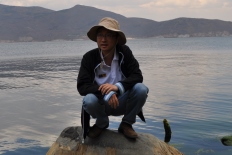 HaoyuMember
HaoyuMemberIt’s good and helpful to read the other posts because we are relatively early in our trial plans. previously with our pre-trial research studies, we’ve always tried to engage stakeholders in the development of research idea, send drafts of the research proposal at various stages to get feedback. What I’ve found interesting is how to get the most feedback from community stakeholders. In some cases, if we just send a whole proposal and as for feedback, we might not really get anything, and it would be good to have face-to-face meetings where researchers could summarize the key steps of the research to get feedback. in other cases, when we send sections or specific components of a project, for example, participant survey questions and ask for feedback, we can get really useful comments on content, language, etc.
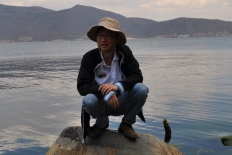 HaoyuMember
HaoyuMemberfrom the case study, it’s obvious that distrust from the community, toward the research team and the trial results was strong. This is really unfortunate as it is a landmark study that took five years to complete. I wish I know more about the circumstances. was there any NEP programs going on at all in the country before the trial started? As the law was in effect at least 2 years before the trial, it is a bit surprising that the researcher teams did not flag it as a serious potential problem, and engaged stakeholders, getting input into prevention, harm reduction package aspects during the trial designing phase. the dialogue around this problem should be continuous, transparent and inclusive, even if in the end, the government authorities and laws are too much for the trial team to overcome and provide the services. Honestly addressing these concerns as a part of dissemination is also something they could have done in the end, even if they were not able to resolve the issue to everyone’s satisfaction.
if there’s a more detailed version of this case study, I would really like to read. As Kathrine said, going forward with next generation of prevention products, and with different prevention standards from various regions, a case like this really can offer valuable insights.
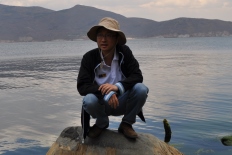 HaoyuMember
HaoyuMemberWe have not started to use social media but it will be something that’s unavoidable down the line, due to extreme popularity of the media in China and also among our target population. social media is a tool and it can also be double edged. In a country were traditional media is very tightly controlled, social media offers a bit more space for discussion on more varied topics and therefore are favored by people. on the other hand, it is also a festering ground for rumors, misinformation, errors and nonsense. So in order to get benefit and minimize harm from social media, there definitely needs to be a good communication plan in close consultation with community stakeholders and crafting of accurate messages. I find myself nodding in agreement a lot reading Mark’s reply above.
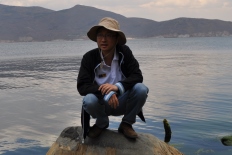 HaoyuMember
HaoyuMemberThis is an interesting question, along with the quadrant chart for this lesson, gets me thinking. I feel like what we have done so far in identifying stakeholders are somewhat obvious and intuitive, or “low-lying fruit”. for example with start with government health authorities, and identify research sites that are most well known and experienced through references by colleagues, and from there come in contact with CBOs and NGOs that have worked with these medical/research centers. Also, we have given talks about our research at large national level conferences on HIV, so potential stakeholders could have heard about our research but haven’t had personal contact with us. Moving forward, we would definitely like to reach more stakeholders, and therefore this question will be important for us to consider. As I mentioned in my assignment, the stakeholder mapping exercise could be very useful for us to do, and the stakeholder priority quadrant would be a useful tool as well. I suppose priority considerations would include what influence each might have on the trial and the level of interest shown by each stakeholder. Of course I think the priority grid should not be rigid and we can move stakeholders around in the grid according to changing situation and need.
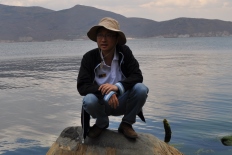 HaoyuMember
HaoyuMemberYes, we have engaged community stakeholders in conducting surveys, one on one interviews and focus groups. These formative research activities help us to better understand community members views on PrEP, HIV prevention, and participation in trials. However, the weaknesses I see in our formative research efforts are 1. we mostly worked with community groups that worked closely with the site research facilities already, so our information source is a bit narrow. 2. we haven’t fully utilized these research findings to help us further our engagement activities and to inform next steps due to uncertainties and delays in the trial itself.
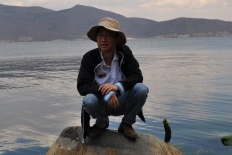 HaoyuMember
HaoyuMemberWe are planning to conduct PrEP trial in China among MSM population, but our team has not conducted any prevention trials in this context before. In our engagement with MSM community groups at potential research sites, we have heard the CBOs telling us about their past experiences in working with research teams, where the researchers didn’t involve them in study design, came to them right before the project is set to start, and ask their help for recruitment. As a result, the CBO staff has very poor understanding of the project, so obviously they cannot clearly communicate to the potential volunteers, and that made recruiting very difficult. Also there wasn’t sufficient funding for community and study participant engagement during the implementation of the trial, so subject adherence and retention was also a big problem. So this type of information we get from our community engagement definitely underscores the importance of GPP implementation, and do it early!
03/29/2016 at 2:24 pm in reply to: Lesson 1: discussion question (post here for course credit) #4497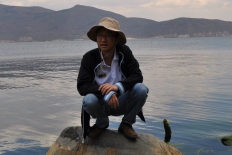 HaoyuMember
HaoyuMemberI would say that understanding of GPP among members of the research team varies quite a bit. some have rather good understanding and are committed to follow its principles. Others acknowledge the importance of GPP and community engagement, but they tend to have a position were community engagement is more of researchers “educating” the community and getting the community groups to “fall in line”. This type of attitude doesn’t necessarily translate into outright disrespectful behavior, in fact mostly they are still very nice in engagement. Nevertheless, researchers with this attitude tend want to design engagement so that they can better control the implementation of the research, rather than let different voices blossom and be discussed.
-
AuthorReplies


